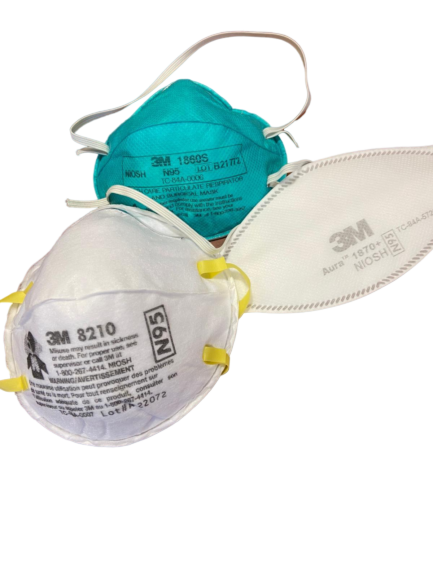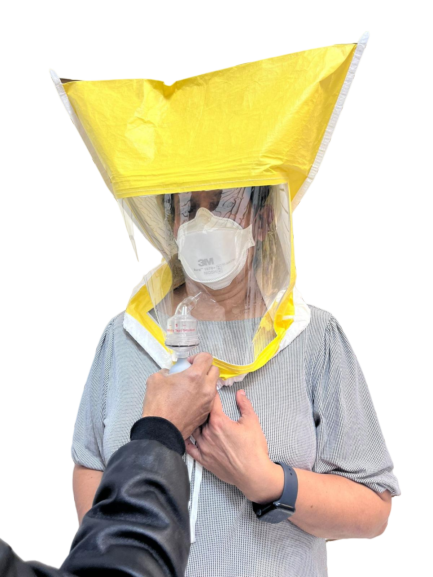The Importance of Mask Fitting and Fit Testing: Ensuring Safety and Effectiveness
In today’s world, where respiratory protection is crucial for health and safety, proper Mask Fitting and fit testing play pivotal roles. Whether in healthcare settings, industrial environments, or even everyday use during public health crises like the COVID-19 pandemic, ensuring masks fit correctly and are tested for efficacy is paramount. Let’s delve into why mask fitting and Fit Testing are so essential.
Understanding Mask Fitting
Mask fitting refers to the process of ensuring that a mask forms a tight seal around the wearer’s face. This seal is crucial because it prevents airborne contaminants from entering the nose and mouth, thereby offering effective respiratory protection. Improperly fitted masks can leak air, reducing their effectiveness and exposing the wearer to potential health risks.

Types of Masks Requiring Fitting
- N95 Respirators: Widely used in healthcare and industrial settings, N95 respirators must be properly fitted to provide the specified level of protection against airborne particles.
- Surgical Masks: Though less stringent in fit requirements than N95 respirators, surgical masks also benefit from proper fitting to enhance their protective capabilities.
Importance of Proper Mask Fitting
1. Maximizes Protection: A well-fitted mask significantly reduces the risk of inhaling airborne contaminants, including viruses, bacteria, dust, and pollutants.
2. Comfort and Wearability: Properly fitted masks are more comfortable to wear for extended periods, encouraging compliance with safety protocols.
3. Prevents Fogging: A good seal minimizes eyewear fogging, crucial for those who wear glasses or goggles in their work environment.
4. Reduces Waste: Ensuring masks fit correctly from the start reduces the likelihood of needing frequent replacements due to discomfort or ineffective use.
Fit Testing: Ensuring Effectiveness
Fit testing is a procedure used to verify whether a specific respirator mask properly fits an individual’s face. It involves qualitative or quantitative methods to assess the seal between the mask and the wearer’s face. Fit testing is critical because:
1. Individual Variability: Faces vary in shape and size, affecting how well a mask fits. Fit testing identifies the right respirator model and size for each person.
2. Compliance with Standards: Occupational Safety and Health Administration (OSHA) and other regulatory bodies require fit testing to ensure masks meet performance standards.
3. Training and Education: Fit testing educates users on how to wear masks correctly, including proper adjustments and seal checks.
Types of Fit Testing Methods
- Qualitative Fit Testing: Relies on the wearer’s sense of taste or smell to detect leakage around the mask when exposed to a test agent (e.g., Bitrex or Saccharin).
- Quantitative Fit Testing: Uses specialized equipment to measure the concentration of particles inside and outside the mask to determine the fit factor.

Steps in Fit Testing Process
- Selection: Choose the appropriate respirator model and size based on the wearer’s facial dimensions.
- Initial Check: Conduct a user seal check before fit testing to ensure the mask is donned correctly.
- Fit Test: Administer the chosen fit testing method, following standardized procedures and protocols.
- Verification: Confirm the respirator passes the fit test and provides adequate protection for the wearer.
Conclusion
In conclusion, proper mask fitting and fit testing are not just procedural requirements but essential steps in ensuring the safety and effectiveness of respiratory protection. Whether in healthcare, industrial, or public settings, these practices safeguard against airborne hazards, enhance comfort, and promote compliance with safety protocols. By understanding and implementing rigorous mask fitting and fit testing procedures, organizations and individuals alike contribute to a safer and healthier environment for everyone.
Remember, a well-fitted mask is your first line of defense against airborne contaminants. Stay safe, stay protected!

Recent Post
What is The Meaning of a Medusa Tattoo?
January 9, 2025
The Meaning of Encanto in Spanish and Origin
January 4, 2025
Equivalent Phrases For “Including But Not Limited To”
December 30, 2024
How To Make Weekend Greetings More Fun?
December 30, 2024
10 Modern Sayings Similar To “Be There Or Be Square”
December 30, 2024







